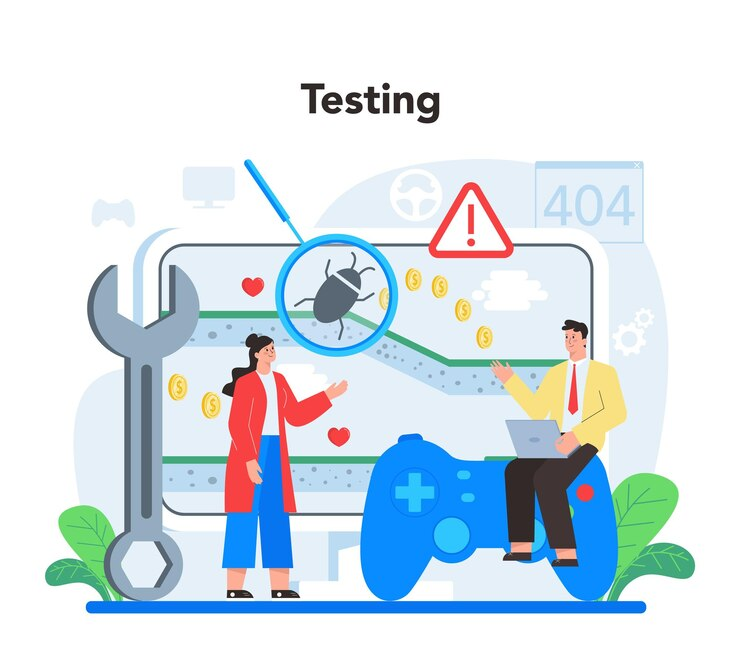Enterprise applications are very important in enabling an enterprise to deliver innovation, efficiency, and value to its consumers through sophisticated software systems. Because of the increasing sophistication of these corporate apps, teams face several challenges, the most important of which is ensuring that they deliver, are secure and are reliable. In this case, sound business application testing is helpful.
This comprehensive guide provides an overview of enterprise application testing, and its importance.
What is Enterprise Application Testing?
Enterprise application testing is validating and verifying that enterprise software applications meet business and technical requirements. These complex business applications, such as ERP, CRM, SCM, and HRM systems, have a broad scope and support core business processes.
Thorough testing is essential, as any defects or vulnerabilities in enterprise apps can negatively impact productivity, revenue, security, and customer experience. According to surveys, the average cost of enterprise application failure is 500,000 to 1 million per hour.
Importance of Testing Enterprise Applications
Here are some key reasons why testing enterprise apps takes priority:
Mitigate Business Risks
Enterprise apps are used for business operations, and any problem with the apps can slow down operations and affect revenues. Thorough testing reduces the likelihood of an app failing in production since it exposes all possible pitfalls.
Improve Software Quality
It helps confirm that the delivered enterprise software meets functional requirements, business objectives, and industry standards, thus enhancing the overall quality of the developed software products.
Enhance User Experience
Thorough testing ensures that applications will run as required and will deliver the intended value to end users such as employees, customers, or partners.
Reduce Costs
Finding and correcting defects during the development phase is less costly than during the production phase. Good testing also minimizes the quality costs linked to application failure in the market.
Types of Enterprise Application Testing
While testing methodologies can vary based on project needs, most enterprise application testing involves these standard types:
Functional testing. Validates that software functions meet intended requirements without defects or gaps. Cross-browser testing ensures compatibility.
Integration testing. Verifies combined software modules/components interact correctly to exchange data and deliver functionality.
Performance testing. Checks application performance for peak load conditions, volume, response times, scalability, and reliability.
Security testing. Assesses application security vulnerabilities, validate controls, checks encryption, access, etc.
Usability testing. Evaluate the ease of use of UX/UI design and ensure the optimal end-user experience.
Accessibility testing. Validates application compliance with accessibility standards for disabled users. Check compatibility with assistive tools.
Compliance testing confirms software adherence to regulatory and statutory requirements. It compares app behavior after code changes, upgrades, and migrations to verify that nothing is out of compliance with standards in the domain or industry.
Regression testing compares app behavior after code changes, upgrades, and migrations to verify that nothing is impacted or broken unexpectedly.
Based on business needs, enterprises validate enterprise IT systems using a combination of manual testing and test automation.
Best Practices for Enterprise Application Testing
Testing enterprise applications is a difficult and complex operation that takes a lot of preparation, execution, and planning. You must adhere to certain best practices, such as the following, to guarantee the testing project’s success and efficacy:
Make Use of Tools and Automation
Automation and technologies may make the testing process much more accurate, efficient, and successful. They may also make tasks like test case creation, test execution, test analysis, and test reporting easier.
In addition to saving money, time, and effort, automation and tools may enhance test findings’ consistency, dependability, and quality. You should supplement automation and tools with power BI consultants and manual testing when required human discernment, imagination, or intuition.
Use a Risk-Based Strategy
A risk-based strategy prioritizes testing tasks according to the effect of corporate applications and the degree of risk. Concentrating on the enterprise apps’ most crucial and significant features and distributing the testing resources appropriately is beneficial.
A risk-based strategy also lessens the risks and problems that can impair the business applications’ usability, performance, security, or quality.
Make Use of an Appropriate Testing Approach
A testing methodology is a set of guidelines or a model that specifies the testing process’s phases, tasks, responsibilities, and deliverables. Testing approaches come in many flavors, including waterfall, agile, DevOps, and hybrid.
Selecting a testing methodology that promotes cooperation, coordination, and communication between the testing team and stakeholders is essential. The methodology should also consider your business applications’ complexity, scale, and nature.
Put Feedback and Testing in Place Continuously
Continuous testing and feedback are crucial throughout the development and deployment lifecycle to guarantee business applications’ quality and dependability. They refer to testing corporate applications at each iteration and stage and giving developers, users, and stakeholders fast and helpful feedback.
In addition to ensuring that corporate apps satisfy evolving user and business requirements and expectations, continuous testing and feedback aid in the early and prompt detection and resolution of any faults, problems, or difficulties.
Join Forces with an Expert Provider of Testing Services
Testing enterprise applications is a complex and specialized activity that requires extensive knowledge, experience, and resources. By working with an expert testing service provider, you can overcome the project’s obstacles and provide the required output and quality.
Functional testing, performance testing, security testing, usability testing, compatibility testing, and reliability testing are just a few of the many QA testing services a professional testing service provider may provide.
Key Metrics To Measure Enterprise Testing Success
Metrics allow test leaders to demonstrate the value delivered by QA teams, identify gaps, and improve for the future.
- Test coverage. Percentage of requirements, features, code, and risks covered to track scope. Goal: 80-90%
- Software stability. The number of severity 1 and 2 defects from UAT shows escapees. The goal is 0 high-priority defects.
- Test cycle times. Time taken per full test cycle. Faster cycles enable agility.
- Defect removal efficiency. The number of defects found before production vs post-deployment reflects maturity. Goal: Find 70-80% defects before release.
- Defect age. The number of days between defect introduction and removal shows velocity. Goal: Remove defects within 1-2 days.
- Escaped defect density. Counting defects reported by customers reflects thoroughness. Goal: Less than 1%.
- Test automation coverage. Percentage of test cases or test effort automated to track benefits.
- Cost of quality testing. Overall investment in QA activities to prevent failures, and measure ROI.
- End-user satisfaction. Customer retention rates and user feedback surveys indicate user experience.
- Time to market. How fast can features be delivered without compromising quality?
Key Takeaways
Enterprise testing validates that business-critical applications deliver their intended functionality without disrupting operations. Based on product needs, it involves testing types such as functional, performance, security, accessibility, compliance, etc.
Thorough, iterative enterprise testing is crucial for delivering high-quality software that enhances customer experience. Testing early and often reduces costs and risks and results in a competitive advantage.

